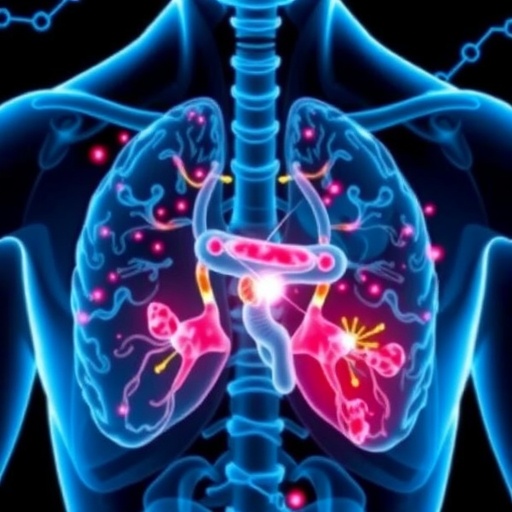May 9, 2018 – A technique of magnetic stimulation of the brain can increase walking speed in patients who are undergoing rehabilitation after a stroke, reports a research update in the American Journal of Physical Medicine & Rehabilitation, the official journal of the Association of Academic Physiatrists. The journal is published by Wolters Kluwer.
Noninvasive repetitive transcranial magnetic stimulation (rTMS) – especially high-frequency stimulation on the same side of the brain where the stroke occurred – leads to improved walking speed, according to the review and meta-analysis by Chengqi He, MD, of Sichuan University, People's Republic of China, and Shasha Li, PhD, of Massachusetts General Hospital and Harvard Medical School and colleagues. But at least so far, the evidence doesn't show improvement in balance and other key outcomes in stroke patients undergoing rTMS.
Magnetic Stimulation of the Brain after Stroke – Promising Results, More Research Needed
The researchers performed a systematic review of the research literature to identify studies of the effects of rTMS on walking and balance function after stroke. In this technique, patients undergo repeated sessions of magnetic stimulation of the brain, with the goal of stimulating a targeted area of the brain. The technique is painless and noninvasive; stimulation is delivered through the skull (transcranial) using magnetic coils.
The review identified nine studies of rTMS, five of which were randomized controlled trials. The studies, including patients with ischemic stroke (caused by a blood clot) or hemorrhagic stroke (caused by bleeding within the brain), were published between 2012 and 2017. Seven studies used high-frequency rTMS and two used low-frequency rTMS. The studies were rated as high quality, but varied in terms of time since stroke, type of magnetic coil used, and brain area targeted.
Six studies, including 139 patients, provided complete data on walking speed. Analysis of pooled data from these studies showed significant improvement in walking speed in patients who received rTMS. The increase in walking speed was greater in studies stimulating the brain on the same side were the stroke occurred (ipsilesional). Based on just one study, there was no significant effect of rTMS targeting the opposite side of the brain (contralesional).
Three studies, including 77 patients, provided complete information on tests of balance function. Analysis of those studies found no significant improvement in balance with rTMS. Additional analyses showed no significant improvement in motor function or brain responsiveness (cortical excitability) with rTMS.
Each year, an estimated 700,000 patients experience a stroke, and about 30 percent of these cannot walk independently at six months after their stroke. Restoration of independent walking ability is a top priority for rehabilitation after a stroke; current rehabilitation approaches are of limited value in restoring walking function.
In recent years, rTMS has come to attention as a potentially useful approach to promoting recovery of limb function. By pooling the results of recent studies, the researchers sought to more precisely evaluate the effects of rTMS on recovery of walking ability and balance function after a stroke.
The findings suggest a significant effect of high-frequency rTMS on walking speed, especially with ipsilateral stimulation. But the limited research evidence to date does not show changes in balance, motor function, or cortical excitability after rTMS. "Future studies with larger sample sizes and an adequate follow-up period are required to further investigate the effects of rTMS on lower limb function and its relationship with changes in cortical excitability with the help of functional neuroimaging techniques," Drs. He and Li and colleagues conclude.
###
Click here to read "Effects of repetitive transcranial magnetic stimulation on walking and balance function after stroke: A systematic review and meta-analysis."
DOI: 10.1097/PHM.0000000000000948
About AJPM&R
American Journal of Physical Medicine & Rehabilitation focuses on the practice, research and educational aspects of physical medicine and rehabilitation. Monthly issues keep physiatrists up-to-date on the optimal functional restoration of patients with disabilities, physical treatment of neuromuscular impairments, the development of new rehabilitative technologies, and the use of electrodiagnostic studies. The Journal publishes cutting-edge basic and clinical research, clinical case reports and in-depth topical reviews of interest to rehabilitation professionals.
About the Association of Academic Physiatrists
The AAP was founded in 1967 to serve as the national organization of physiatrists who are affiliated with medical schools. The AAP is a member organization of the Association of American Medical Colleges (AAMC). The objectives of the Association are to promote the advancement of teaching and research in Physical Medicine and Rehabilitation within an academic environment. The organization acts as a sounding board and forum for the exchange of ideas and information relative to all phases of the art and science of Physical Medicine and Rehabilitation.
About Wolters Kluwer
Wolters Kluwer is a global leader in professional information, software solutions, and services for the health, tax & accounting, finance, risk & compliance, and legal sectors. We help our customers make critical decisions every day by providing expert solutions that combine deep domain knowledge with specialized technology and services.
Wolters Kluwer, headquartered in the Netherlands, reported 2017 annual revenues of €4.4 billion. The company serves customers in over 180 countries, maintains operations in over 40 countries, and employs approximately 19,000 people worldwide.
Wolters Kluwer Health is a leading global provider of trusted clinical technology and evidence-based solutions that engage clinicians, patients, researchers and students with advanced clinical decision support, learning and research and clinical intelligence. For more information about our solutions, visit http://healthclarity.wolterskluwer.com and follow us on LinkedIn and Twitter @WKHealth.
Media Contact
Connie Hughes
[email protected]
646-674-6348
@WKHealth
http://www.lww.com





